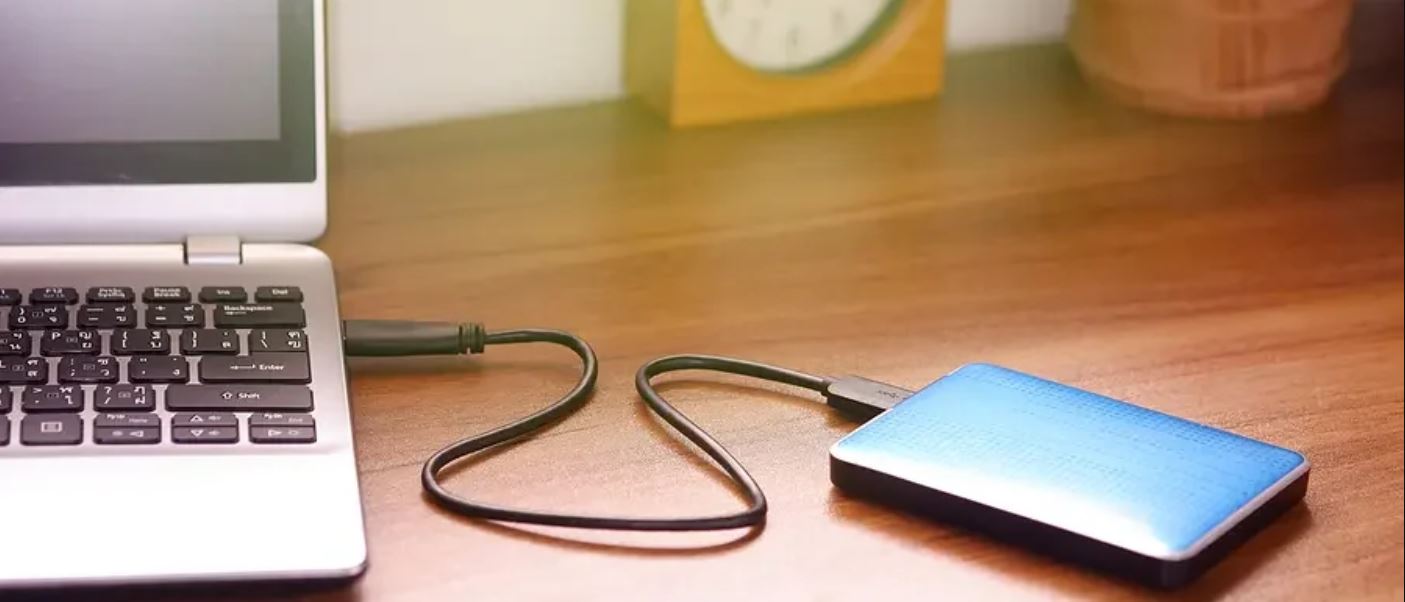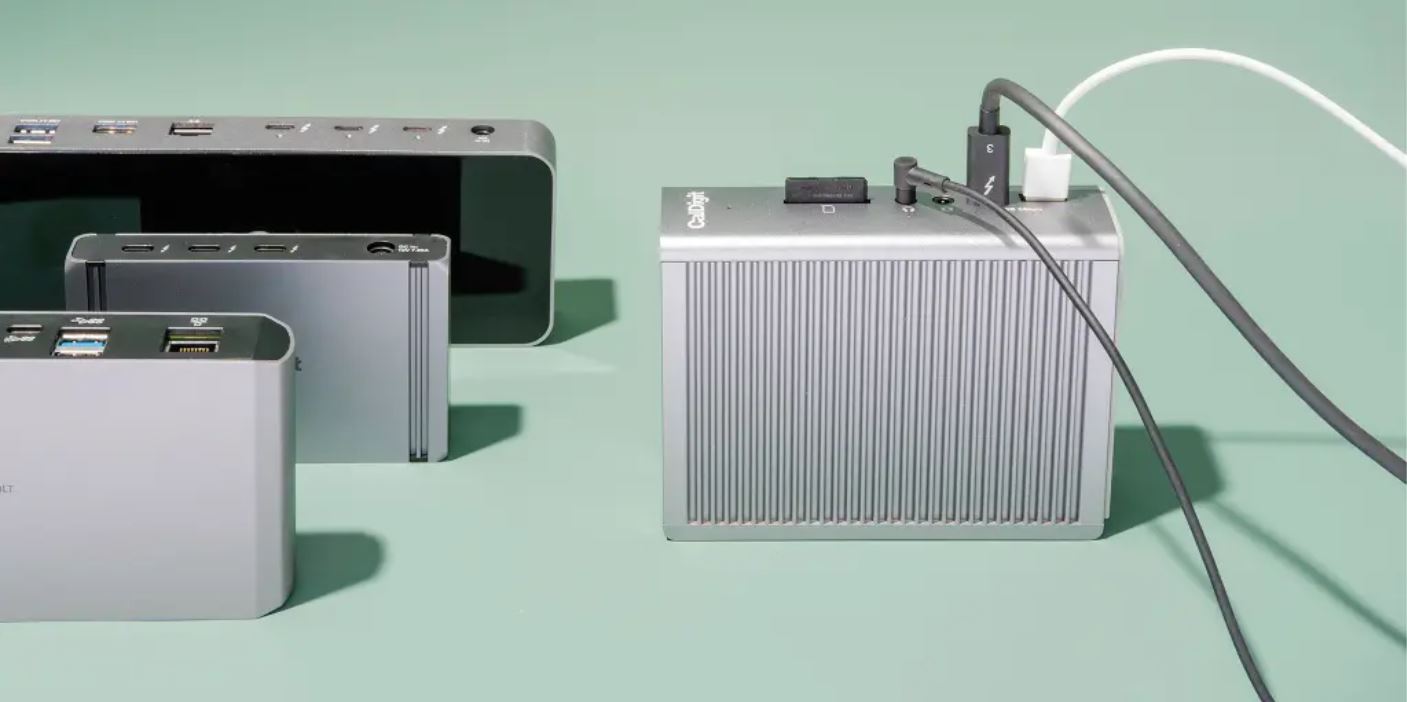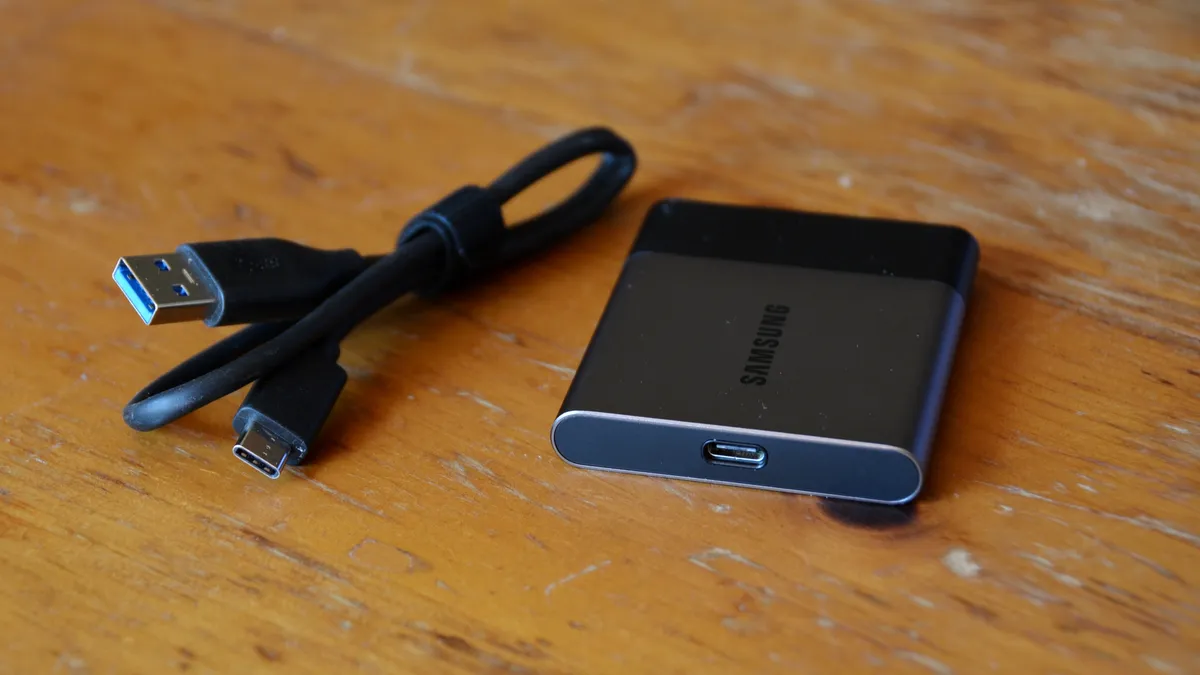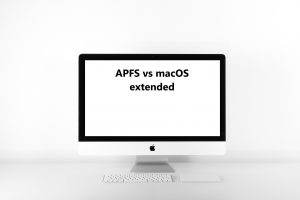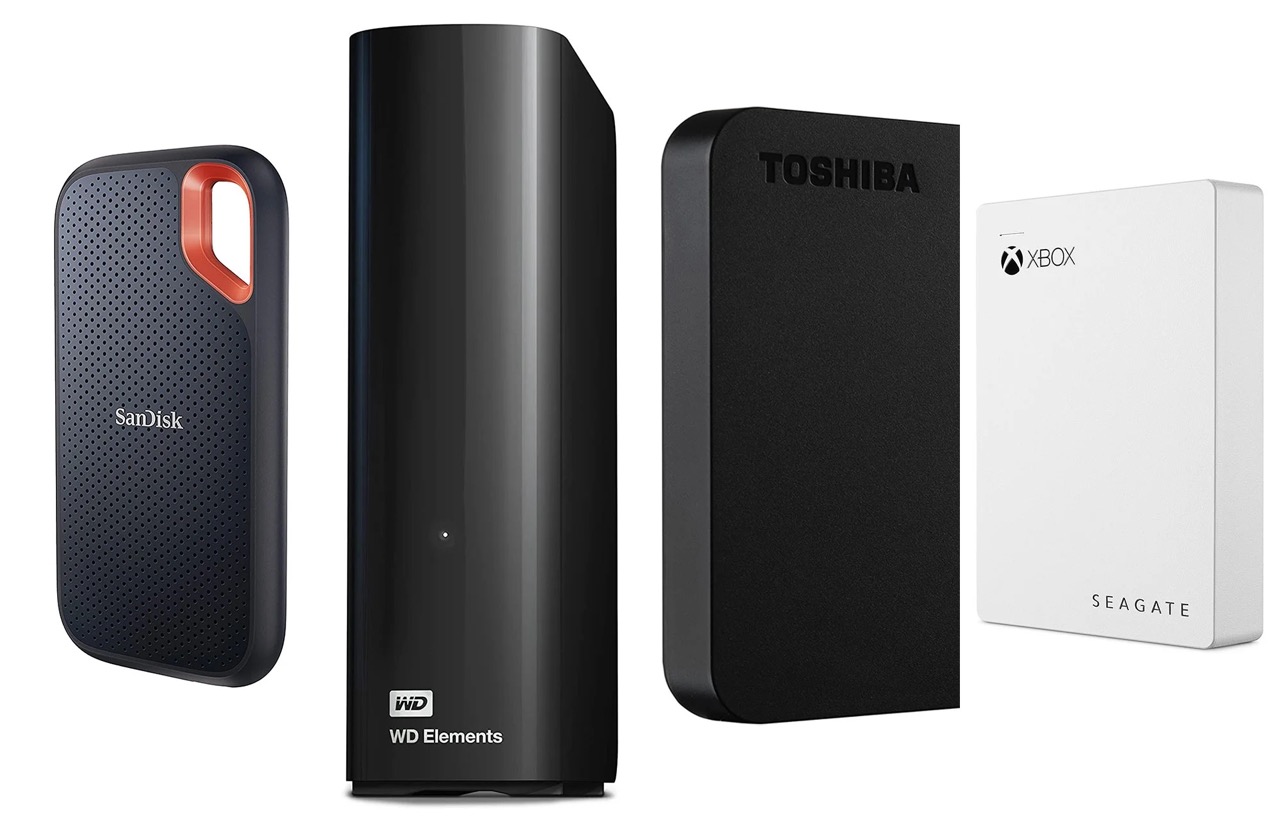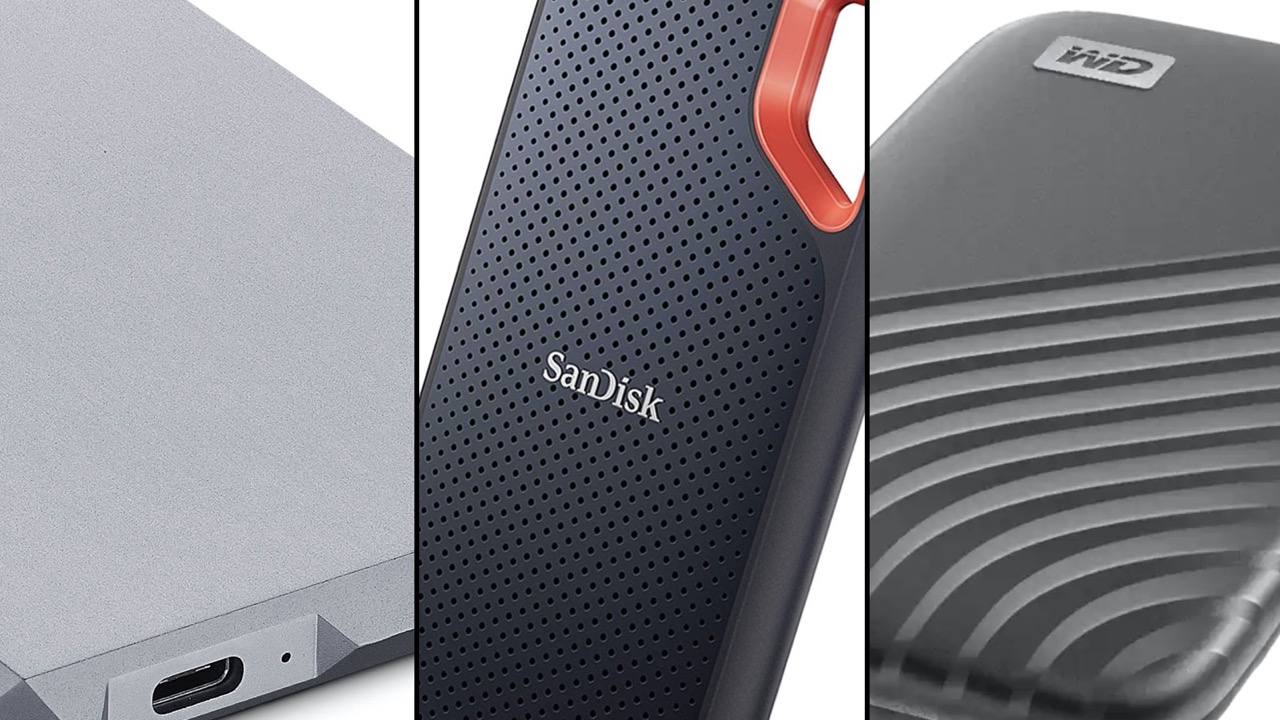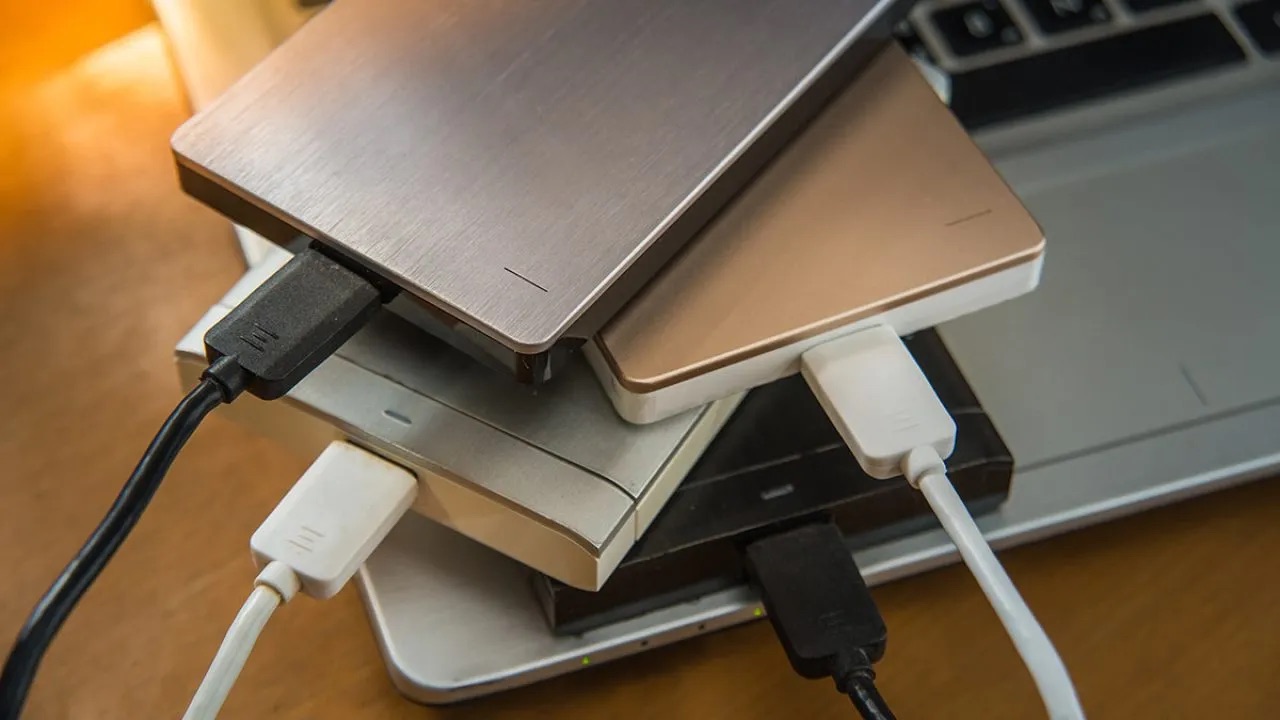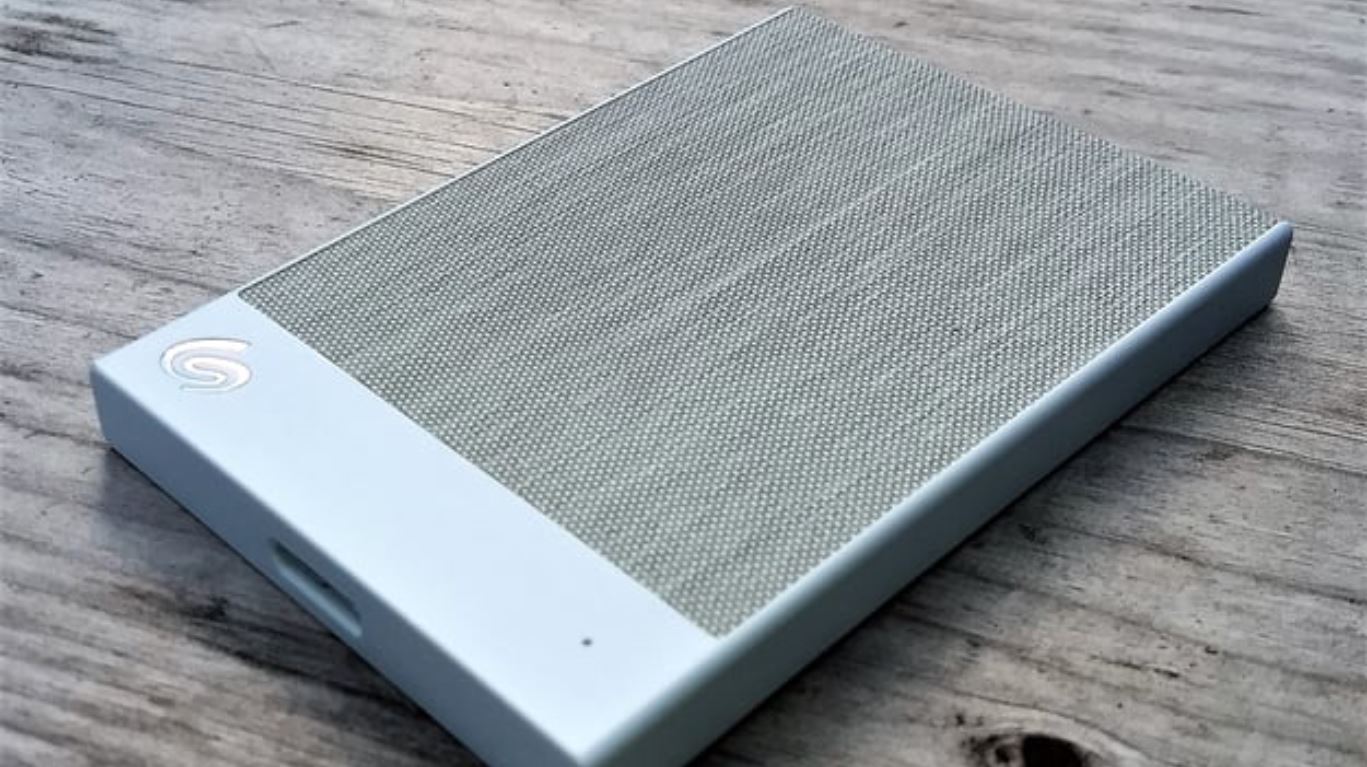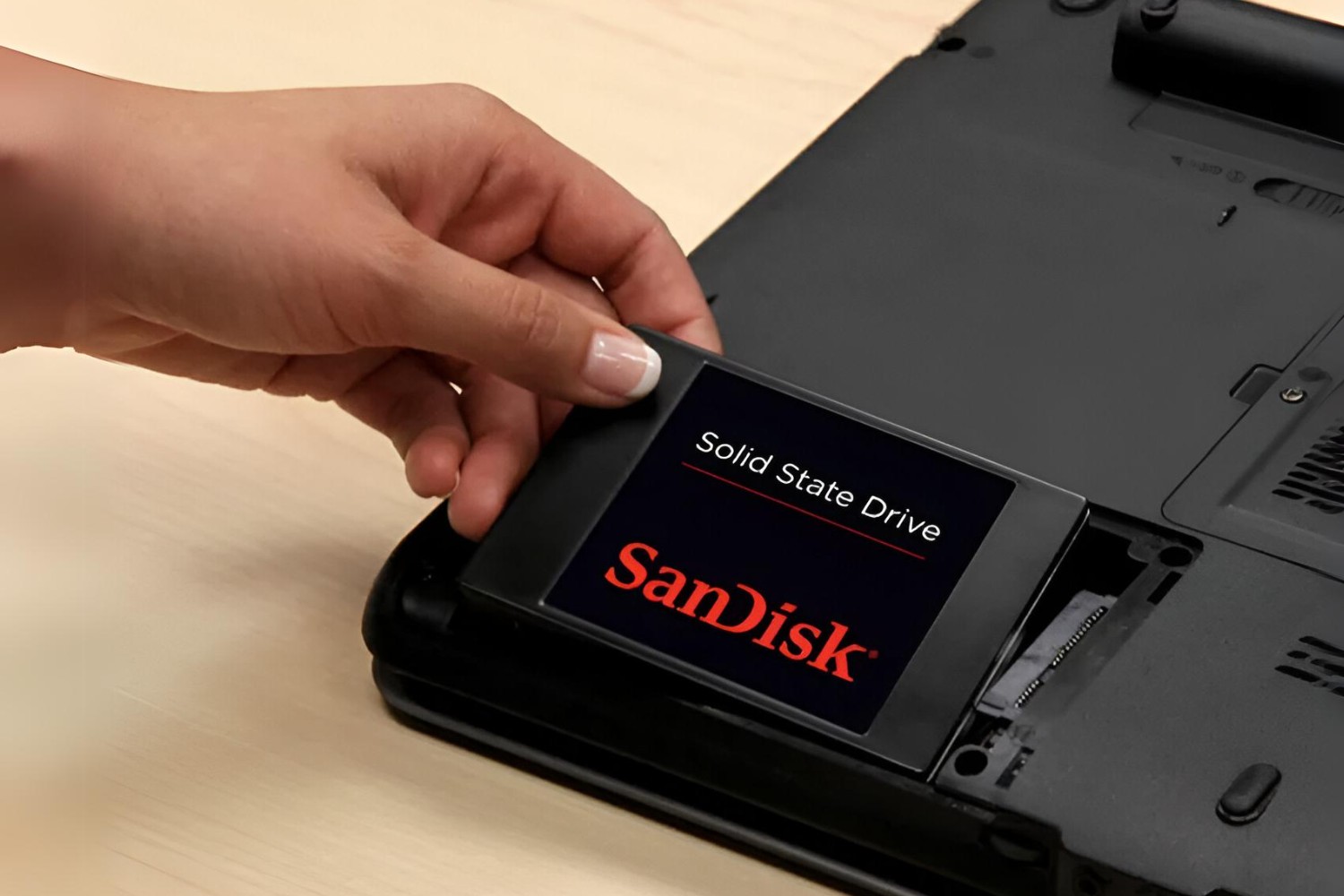Introduction
An external hard drive is a convenient and reliable storage solution for individuals and businesses alike. Whether you need to expand the capacity of your computer, back up important files, or transport data between devices, an external hard drive can be a lifesaver. However, like any electronic device, external hard drives have a limited lifespan and can eventually fail.
Understanding how long an external hard drive lasts is crucial for ensuring the security and longevity of your data. While it’s impossible to provide an exact lifespan for every external hard drive, there are several factors that can influence its durability. By considering these factors and taking proper care of your external hard drive, you can prolong its life and minimize the risk of data loss.
In this article, we will explore the factors that determine the lifespan of an external hard drive and signs that indicate it is failing. We will also provide some tips on how to extend the lifespan of your external hard drive, so you can get the most out of your investment and keep your data safe.
Factors that Determine the Lifespan of an External Hard Drive
The lifespan of an external hard drive can vary greatly depending on several factors. Understanding these factors can help you assess the durability of your hard drive and make informed decisions to prolong its lifespan. Let’s explore the key factors that influence the longevity of an external hard drive:
- Quality of the Hard Drive: The quality of the components used in the manufacturing of the external hard drive plays a significant role in its lifespan. High-quality hard drives tend to be more reliable and durable, thus lasting longer than cheaper alternatives.
- Usage Frequency: How frequently you use your external hard drive can impact its lifespan. Continuous and excessive use can put a strain on the drive’s mechanical parts and lead to premature failure. Conversely, infrequent usage allows the drive to remain idle for extended periods, potentially increasing its lifespan.
- Operating Conditions: The operating conditions in which your external hard drive is stored and used can affect its longevity. Factors such as temperature, humidity, and exposure to dust or moisture can contribute to the degradation of the drive over time. The ideal operating conditions for an external hard drive include a cool and dry environment.
- Storage Capacity and Usage: The storage capacity of your external hard drive and how you utilize it also impact its lifespan. When the drive is filled to its maximum capacity, the drive’s components may be subjected to more stress, potentially reducing its lifespan. Additionally, constantly performing read and write operations, such as frequently transferring files or running applications directly from the external hard drive, can lead to increased wear and tear.
- Brand Reputation: The reputation and track record of the hard drive manufacturer can give you an indication of the expected lifespan of the device. Well-established and reputable brands often prioritize quality and reliability, which can result in longer-lasting external hard drives.
By considering these factors when purchasing and using an external hard drive, you can make informed decisions to ensure maximum lifespan and data security. However, it’s important to note that while these factors play a role, there is no definitive timeframe for the lifespan of an external hard drive.
Quality of the Hard Drive
The quality of the external hard drive is one of the most crucial factors that determine its lifespan. Higher quality hard drives are typically built with better components and undergo stricter manufacturing processes, resulting in a more durable and reliable product.
When it comes to assessing the quality of a hard drive, it’s important to consider the reputation of the manufacturer. Well-established brands with a proven track record often prioritize quality and reliability, as they have a reputation to uphold. Researching and choosing a reputable brand can give you confidence in the longevity of your external hard drive.
Aside from the brand, there are other indicators of quality to consider. Pay attention to the specifications of the hard drive, such as the rotational speed (RPM), cache size, and data transfer technology (e.g., SATA, USB 3.0). These factors can impact the performance and reliability of the drive. Additionally, reading reviews and customer feedback can provide valuable insights into the overall quality and durability of the hard drive you’re considering.
Investing in a high-quality external hard drive may come with a higher upfront cost, but it can save you money and stress in the long run. These drives are designed to withstand regular use, have better data transfer rates, and are less prone to failure. They often come with warranties, which further demonstrates the manufacturer’s confidence in the quality of their product.
Keep in mind that the specific lifespan of a hard drive will depend on various other factors, such as usage patterns and operating conditions. However, investing in a high-quality hard drive sets a strong foundation for a longer-lasting and more reliable storage solution.
Usage Frequency
The frequency with which you use your external hard drive can significantly affect its lifespan. Continuous and excessive use can result in increased wear and tear on the drive’s mechanical components, potentially leading to a shorter lifespan.
When a hard drive is constantly spinning and in use, it generates heat and puts stress on its internal components such as the motor, platters, and read/write head. Over time, this continuous strain can contribute to mechanical failures and data corruption.
It is important to consider your usage patterns and determine if there are opportunities to reduce the frequency of external hard drive usage. For example, you may want to avoid running resource-intensive applications directly from the external hard drive or limit the number of read/write operations performed on the drive. Instead, consider copying the necessary files onto your computer’s internal storage for regular usage.
If you are using your external hard drive for backup purposes, it is recommended to schedule backups during times when the drive is not in constant use. This can help reduce the strain on the drive while ensuring your data remains secure.
By employing mindful usage practices, such as minimizing the frequency of drive access and giving the drive periodic breaks, you can help extend the lifespan of your external hard drive.
It’s worth noting that infrequent use also has its drawbacks. If an external hard drive remains idle for extended periods, it may experience issues like stiction, where the read/write head gets stuck to the platter surface due to lack of regular movement. To mitigate this, it is recommended to perform periodic disk checks and access the drive at least once every few months to ensure it remains in good working condition.
Ultimately, finding the right balance between usage frequency and giving the drive rest periods can help maximize the lifespan of your external hard drive and ensure the longevity of your data storage solution.
Operating Conditions
The operating conditions in which you store and use your external hard drive can significantly impact its lifespan. Factors such as temperature, humidity, exposure to dust or moisture, and even physical movement can all contribute to the degradation of the drive over time.
Extreme temperatures can have a detrimental effect on the internal components of the external hard drive. High temperatures can cause the drive to overheat, leading to data corruption and potential hardware failure. On the other hand, extremely cold temperatures can cause the lubricants in the drive to thicken, hindering smooth operation. It is advisable to store and operate your external hard drive in a cool and well-ventilated environment to prevent excessive heat buildup.
Humidity is another factor that can impact the longevity of your external hard drive. High humidity levels can lead to condensation inside the drive, potentially causing short circuits and corrosion. It is recommended to store your external hard drive in a dry environment and avoid exposing it to excessive moisture.
Additionally, dust and debris can accumulate on the external hard drive’s exterior and affect its performance over time. Regularly cleaning the drive and protecting it with a dust cover or storage case can help prevent dust accumulation and maintain proper airflow.
Physical movement can also pose a risk to the external hard drive. Sudden drops or impacts can cause damage to the delicate internal components, leading to mechanical failures. To mitigate this risk, handle your external hard drive with care and avoid subjecting it to unnecessary shocks or rough handling.
By taking measures to ensure optimal operating conditions for your external hard drive, you can help extend its lifespan and maintain the integrity of your data. Storing the drive in a cool, dry, and clean environment, handling it with care, and protecting it from physical damage are essential steps to maximize its longevity.
Storage Capacity and Usage
The storage capacity of your external hard drive and how you utilize it can have a significant impact on its lifespan. When a hard drive is near or at its maximum capacity, it can put increased stress on the drive’s mechanical components, resulting in a shorter lifespan.
When a hard drive is nearly full, it requires more effort to find available space to store new data. This constant searching and rearranging of data on the drive can lead to increased wear and tear on the mechanical parts, such as the spinning platters and read/write heads. It is recommended to keep at least 10-15% of the drive’s total capacity free to ensure optimal performance and reduce strain on the drive.
Another factor to consider is the usage patterns of the external hard drive. If you frequently perform read and write operations, such as transferring large files or running applications directly from the external hard drive, it can contribute to increased wear and a higher chance of mechanical failures.
To extend the lifespan of your external hard drive, optimize the way you use the storage capacity. Regularly remove unnecessary or duplicate files, and consider offloading infrequently accessed files to other storage solutions. By utilizing your external hard drive for essential and frequently used data, you can reduce the number of read and write operations performed on the drive, lessening the chances of mechanical strain.
It is also important to ensure that you safely eject the external hard drive before disconnecting it from your computer. Abruptly unplugging the drive while data is being read or written can lead to data corruption and even physical damage to the drive. Always follow the recommended eject process to protect your data and minimize the risk of drive failure.
By effectively managing the storage capacity and usage of your external hard drive, you can optimize its performance and lifespan, ensuring that it continues to serve as a reliable data storage solution.
Brand Reputation
The reputation of the brand manufacturing the external hard drive can be a significant factor in determining its lifespan and overall quality. Choosing a reputable brand with a track record of producing reliable and durable storage devices can provide assurance that your external hard drive will last longer.
Well-established brands in the industry invest in research, development, and testing to deliver high-quality products. They often adhere to strict manufacturing standards to ensure that their external hard drives meet or exceed industry performance and reliability benchmarks.
When selecting an external hard drive, consider the reputation of the brand based on factors such as customer reviews, ratings, and endorsements. Positive feedback and high ratings from other users can indicate a brand’s commitment to producing reliable products. Conversely, a brand with a history of negative reviews or frequent hardware failures may suggest potential quality or durability issues.
Reputable brands also tend to provide excellent customer support and warranty services. They stand behind their products and offer comprehensive support in case of any issues or concerns. This level of support can give you peace of mind, knowing that you can rely on the brand to address any problems that may arise.
Keep in mind that while brand reputation is an important consideration, it should not be the sole factor in choosing an external hard drive. Other factors, such as specific storage requirements, budget, and performance needs, should also be taken into account. However, opting for a well-regarded brand can increase the likelihood of acquiring a reliable and long-lasting external hard drive.
Researching the reputation of the brand and assessing customer feedback can help ensure that you choose an external hard drive from a brand that is known for producing reliable and durable storage solutions.
Signs that Your External Hard Drive is Failing
Recognizing the signs of a failing external hard drive is crucial to prevent data loss and take appropriate action in a timely manner. Here are some common indicators that your external hard drive may be failing:
- Slow Performance: If you notice a significant decrease in the speed at which files are being accessed or transferred, it could be a sign of a failing external hard drive. Slow performance can be caused by mechanical issues or data corruption within the drive.
- Unusual Noises: Strange clicking, grinding, or whirring noises coming from the external hard drive can indicate mechanical failures. These noises are often an indication that the drive’s internal components are not functioning correctly and require immediate attention.
- Frequent Disconnections: If your external hard drive frequently disconnects or becomes unresponsive while in use, it may be a sign of a failing connection or an issue with the drive itself. This can happen due to loose cables, faulty ports, or internal drive problems.
- Error Messages: If you encounter frequent error messages when accessing files or performing operations on the external hard drive, it could indicate data corruption or issues with the drive’s firmware. Error messages may include messages about inaccessible files, read/write errors, or disk formatting issues.
- Inaccessible Data: If you are unable to access your files or folders on the external hard drive or experience frequent file corruption, it is a clear indication that your drive is in trouble. In some cases, you may receive error messages stating that the drive needs to be formatted before use.
Should you notice any of these signs, it is important to take immediate action to prevent further damage or data loss. Firstly, back up your important data from the failing drive to another storage device. It is also advisable to run diagnostics and repair utilities provided by the drive manufacturer, if available.
If the issues persist, it may be necessary to seek professional assistance from data recovery specialists who can help retrieve your data from the failing external hard drive. Additionally, consider replacing the drive to avoid further data loss and potential system crashes.
Paying attention to these warning signs can help you detect a failing external hard drive early on and take the necessary precautions to safeguard your data.
Slow Performance
One of the most noticeable signs that your external hard drive may be failing is a significant decrease in performance. If you find that accessing or transferring files takes longer than usual, it could be an indication that your drive is experiencing issues.
Slow performance can be caused by a variety of factors, including mechanical problems, file system errors, or data corruption. The drive’s internal components, such as the motor, platters, or read/write head, may be failing or struggling to function properly.
When a hard drive starts to fail, it often requires extra time to locate and retrieve files. This can result in frustratingly slow read and write speeds. You may notice that it takes longer to open files, load applications, or copy data to and from the external hard drive.
In addition to slow speed, you may also experience regular pauses or delays when accessing files or folders. This can be particularly frustrating if you rely on your external hard drive for everyday tasks or if you frequently work with large media files.
It is important not to ignore persistent slow performance as it can be an early warning sign of imminent failure. The longer you continue to use a failing external hard drive, the greater the risk of further damage and potential data loss.
If you notice slow performance, there are a few steps you can take to address the issue. Firstly, make sure the drive is properly connected to your computer and that the cables are in good condition. A loose or faulty connection could be the cause of the slow performance.
You should also run a diagnostic check on the drive using appropriate software provided by the manufacturer. This can help identify any errors or issues with the hard drive and provide recommendations for repair or replacement.
If the slow performance persists even after checking the connections and running diagnostics, it is advisable to back up your important data from the failing drive as soon as possible. This will help ensure that you have a copy of your files in case of complete drive failure.
Safeguarding your data by regularly backing up important files and monitoring the performance of your external hard drive can help you detect slow performance and take the necessary steps to protect your data before it’s too late.
Unusual Noises
If you start hearing unusual noises coming from your external hard drive, it is a clear indication that something may be wrong. Unusual noises can be a sign of mechanical failures or component malfunctions within the drive.
Common abnormal noises include clicking, grinding, or whirring sounds. These noises can occur when the hard drive’s internal components, such as the motor, read/write head, or spinning platters, are not functioning correctly.
The clicking noise, often referred to as the “click of death,” is particularly concerning. It usually indicates a read/write head problem or other severe mechanical issues. If you hear repeated clicking sounds, it is best to power off the external hard drive immediately to prevent further damage.
A grinding or scraping noise is another cause for concern. It may suggest that the read/write head is physically scraping against the platters, which can result in data loss and irreparable drive damage. In this case, you should shut down the drive and seek professional assistance.
Whirring sounds, resembling a fan spinning loudly, can indicate issues with the motor or internal bearings of the hard drive. If the noise is persistent and gets louder over time, it is advisable to back up your data as soon as possible and take action to address the problem.
If you notice any of these unusual noises coming from your external hard drive, it is essential to act promptly. Continuing to use a drive that is making unusual sounds can lead to further damage and potential data loss.
To troubleshoot the issue, start by checking the connections between the external hard drive and your computer. A loose or faulty cable connection could cause strange noises. Ensure that the cables are securely plugged in and that they are not damaged.
If the noises persist after checking the connections, the best course of action is to back up your data immediately. This will help safeguard your files in the event of complete drive failure.
Seeking professional assistance is advisable if the unusual noises persist or if the drive becomes unresponsive. Data recovery specialists can help assess the situation and, if necessary, retrieve your data from the failing drive.
Remember, unusual noises from your external hard drive should never be ignored. Taking swift action can help minimize the risk of data loss and potentially salvage the drive if caught early enough.
Frequent Disconnections
If your external hard drive frequently disconnects or becomes unresponsive while in use, it is a clear sign that something may be amiss. This issue can manifest as intermittent disconnections or sudden unresponsiveness of the drive, requiring you to unplug and reconnect it to restore functionality.
There are several potential causes for frequent disconnections. A loose or faulty cable connection can result in intermittent interruptions in the data transfer between the drive and your computer. It is important to ensure that the cables are securely plugged in and that there are no visible signs of damage.
However, if you have ruled out cable issues and the disconnections persist, it may indicate a problem with the external hard drive itself. It could be an internal hardware issue, a malfunctioning drive controller, or even a failure within the drive’s electronics.
Frequent disconnections can have serious implications for your data integrity and the health of your external hard drive. Abruptly disconnecting the drive while data is being read or written can lead to data corruption, file system errors, and potential hardware damage. It is crucial to address the issue promptly to prevent further damage and potential data loss.
To troubleshoot this problem, try connecting the drive to a different USB port on your computer. This can help determine if the issue is specific to a particular port or if it persists across multiple ports.
If the frequent disconnections persist after trying different ports, consider testing the drive on another computer. This can help determine if the problem lies with the drive itself or if it is related to your computer’s hardware or software configurations.
If the issue continues to occur on multiple devices, it is indicative of a problem with the external hard drive that requires further attention. In such cases, contacting the manufacturer’s customer support or seeking professional assistance is recommended.
Remember to regularly back up your data from the external hard drive to minimize the risk of data loss. In the event of complete drive failure, having a backup ensures that your important files are protected and easily recoverable.
Addressing the issue of frequent disconnections promptly can help preserve the integrity of your data and prevent potential drive failures. Seeking professional help when needed ensures that you receive accurate diagnosis and guidance for repair or data recovery.
Error Messages
If you encounter frequent error messages when accessing your external hard drive, it could be a sign of underlying issues with the drive. Error messages can appear in various forms and indicate different problems that may require attention.
Common error messages include notifications about inaccessible files or directories, read/write errors, disk formatting issues, or notifications that the drive needs to be repaired. These error messages can indicate data corruption, file system errors, or physical problems with the drive.
When you encounter error messages, it is crucial to assess the severity of the issue. Some error messages may be temporary and can be resolved by simply disconnecting and reconnecting the drive or restarting your computer. However, if the error messages persist, it is essential to take further action.
First, try running the built-in error-checking tool provided by your operating system. This tool can scan the external hard drive for file system errors and attempt to repair them. It is advisable to back up your important data before running any repair procedures to mitigate the risk of further data loss.
If the error messages persist or if the error-checking tool fails to fix the issues, it is recommended to seek professional help. Data recovery specialists or the manufacturer’s customer support team can assist in diagnosing the problem and providing appropriate solutions.
Avoid ignoring error messages, as they can be indicative of more significant underlying issues. Continuing to use a drive that consistently generates error messages can further damage the drive and potentially result in permanent data loss.
Regularly backing up your data is crucial to mitigate the risk of data loss when dealing with error messages. Having a current backup copy of your important files ensures that you can restore your data in case of complete drive failure.
Remember, error messages should not be taken lightly. Take appropriate measures to address them promptly, either by troubleshooting on your own or seeking professional assistance, to prevent data loss and potential drive failure.
Inaccessible Data
If you find that you are unable to access your files or folders on your external hard drive, it is a clear indication that something is wrong. Inaccessible data can be a distressing sign that your drive may be failing or experiencing critical issues.
When your data becomes inaccessible, it can stem from various factors such as data corruption, file system errors, or physical problems with the external hard drive. This can manifest as error messages stating that the drive is not recognized, needs formatting, or that files are unreadable.
If you encounter inaccessible data, it is crucial not to panic. Instead, focus on resolving the issue while minimizing the risk of further data loss.
One of the first steps you can take is to try connecting the external hard drive to a different USB port on your computer or even to another computer. It is possible that the issue is not with the drive itself but rather with the connection or compatibility between the drive and your system.
If connecting the drive to another computer does not solve the problem, it may indicate data corruption or severe drive issues. In such cases, it is advisable to seek professional assistance from data recovery specialists or the manufacturer’s customer support team.
Backing up your data from the inaccessible drive should be a priority. However, attempting to recover data on your own without proper knowledge and tools can lead to further damage or permanent data loss. Data recovery specialists have the expertise and specialized equipment to handle such situations and maximize the chances of successful data retrieval.
It is essential to note that continued use of the drive without addressing the issue may worsen the situation and increase the risk of complete drive failure. Avoid any attempts to force or format the drive without professional guidance, as this could result in irreversible data loss.
Going forward, regularly backing up your data from your external hard drive will help mitigate the impact of inaccessible data and potential drive failures. By maintaining current backups, you can ensure that your important files are protected and easily recoverable.
Remember, if you encounter inaccessible data on your external hard drive, seek reliable professional assistance to minimize the risk of data loss and increase the chances of successful data recovery.
How to Extend the Lifespan of Your External Hard Drive
To maximize the lifespan of your external hard drive and ensure the longevity of your valuable data, it is important to take proactive steps in its care and maintenance. Here are some tips to help extend the lifespan of your external hard drive:
- Handle with Care: Treat your external hard drive with care and avoid subjecting it to unnecessary shocks or rough handling. Avoid dropping or jarring the drive, as this can cause damage to the internal components.
- Keep it Cool: Heat can be detrimental to the lifespan of your external hard drive. Ensure that the drive is stored in a cool and well-ventilated environment. Avoid exposing it to direct sunlight or placing it near sources of heat.
- Protect from Physical Damage: Store your external hard drive in a protective case or cover to shield it from dust, moisture, and potential physical damage. Avoid placing heavy objects on top of the drive or stacking other items on it.
- Safely Eject the Drive: Always follow the correct procedure to safely eject your external hard drive before disconnecting it from your computer. Abruptly unplugging the drive can cause data corruption and compromise its overall performance and longevity.
- Regularly Update Firmware and Software: Check for firmware updates provided by the manufacturer for your external hard drive. These updates often include performance enhancements, bug fixes, and improved compatibility. Similarly, keep your computer’s operating system and antivirus software up to date to ensure optimal performance and security.
In addition to these tips, it is crucial to establish a regular backup routine. Regularly back up your important files from your external hard drive to another storage solution, whether it be cloud storage, another external drive, or a network-attached storage (NAS) device. This precautionary measure ensures that your data remains safe even in the event of a complete drive failure.
Periodic disk checkups are also recommended to identify and address any potential issues before they escalate. Utilize diagnostic tools provided by the manufacturer to scan and repair any errors or bad sectors on the drive.
Lastly, avoid overloading your external hard drive by keeping a reasonable amount of free storage space. Aim to leave at least 10-15% of the drive’s total capacity free, as this can promote better performance and reduce stress on the hardware components.
By following these practices, you can significantly extend the lifespan of your external hard drive and ensure that it continues to provide reliable and secure storage for your valuable data.
Handle with Care
Proper handling of your external hard drive is crucial for extending its lifespan and ensuring its optimal performance. Treating your drive with care can help prevent physical damage to its delicate internal components and reduce the risk of premature failure. Here are some tips for handling your external hard drive:
Avoid Dropping or Jarring: Accidental drops or bumps can cause severe damage to the internal components of your external hard drive. The delicate read/write head, platters, and motor can be easily damaged by sudden impacts. Therefore, it’s essential to handle the drive with care and avoid subjecting it to any unnecessary shocks or jolts.
Secure Packing: When transporting your external hard drive, ensure it is securely packed in a protective case or sleeve. This can help cushion the drive and provide an additional layer of protection against accidental bumps or dings. Avoid stacking heavy items on top of the drive or placing it in a bag with sharp or heavy objects that could potentially damage the drive.
Avoid Extreme Temperatures: High temperatures can have a detrimental effect on the internal components of your external hard drive. Avoid exposing the drive to direct sunlight or leaving it in a hot car or an environment with high heat levels. On the other hand, extreme cold temperatures can also negatively impact the drive’s performance. It’s important to store and use the drive in a moderate temperature range to ensure optimal functioning.
Proper Cable Management: When connecting or disconnecting the drive, handle the cables with care and avoid bending or twisting them excessively. This can prevent damage to the connectors and ensure a stable and secure connection. It’s also essential to use high-quality cables that are appropriate for the data transfer speed of your drive to prevent data loss or interruptions.
Store in a Safe Place: When the external hard drive is not in use, store it in a safe place where it is protected from potential hazards such as liquids, dust, and excessive moisture. Using a dedicated storage case or keeping it in a clean and dust-free environment can help maintain the drive’s performance and protect it from physical damage.
By handling your external hard drive with care and implementing these precautions, you can minimize the risk of accidental damage and extend its lifespan. Remember that prevention is key when it comes to protecting your valuable data stored on the drive, and every effort should be made to ensure its safety.
Keep it Cool
Maintaining an optimal temperature is essential for extending the lifespan and ensuring the reliable performance of your external hard drive. Excessive heat can be detrimental to the internal components of the drive and increase the risk of hardware failure. Here are some tips to help keep your external hard drive cool:
Proper Ventilation: Ensure that your external hard drive has adequate airflow around it. Avoid placing it in cramped spaces or covering it with objects that may block the ventilation holes. Sufficient airflow allows heat to dissipate, keeping the drive at a safe operating temperature.
Avoid Direct Sunlight: Exposure to direct sunlight can cause the external hard drive to heat up quickly. Keep it away from windows or other areas where it may be exposed to direct sunlight for extended periods. If possible, use a shield or curtain to reduce the amount of sunlight reaching the drive.
Cool Storage Environment: Store your external hard drive in a cool environment to minimize temperature-related issues. Avoid placing it in areas that are prone to high temperatures, such as near heating vents or radiators. Optimal ambient temperature for your drive typically ranges from 5 to 35 degrees Celsius (41 to 95 degrees Fahrenheit).
Use Cooling Accessories: If you frequently use your external hard drive in warmer environments or notice that it tends to heat up quickly, consider using cooling accessories. External cooling pads or fans can help regulate the temperature around the drive and prevent it from overheating.
Monitor Drive Temperature: Keep an eye on the temperature of your external hard drive. Many drive manufacturers offer diagnostic tools or software that allow you to monitor drive temperature in real-time. If you notice that the drive consistently operates at high temperatures, take measures to reduce the heat, such as improving airflow or using additional cooling measures mentioned above.
By keeping your external hard drive cool, you can minimize the risk of overheating, which can lead to premature failure and data loss. Proper ventilation, avoiding direct sunlight, and maintaining a cool storage environment are simple yet effective steps to ensure the longevity and reliable performance of your drive.
Protect from Physical Damage
Protecting your external hard drive from physical damage is crucial for ensuring its longevity and preserving the integrity of your data. By taking preventive measures, you can minimize the risk of accidental drops, bumps, and other physical mishaps that can lead to drive failure. Here are some tips to protect your external hard drive from physical damage:
Use a Protective Case: Investing in a high-quality protective case or sleeve specifically designed for portable hard drives can provide an extra layer of protection. These cases often offer cushioning and shock-absorption capabilities, safeguarding the drive against accidental bumps and drops.
Avoid Excessive Pressure: Try to avoid placing heavy objects on top of your external hard drive or stacking other items on it. Applying excessive pressure on the drive can lead to internal component damage or cause the drive case to deform, compromising its overall performance and longevity.
Secure Storage: When not in use, store your external hard drive in a safe and stable location. Avoid areas where it can be easily knocked over or fall from a height. Ensure that the storage surface is flat, which helps prevent accidental slips or falls.
Transport with Care: When carrying your external hard drive, handle it with caution and avoid unnecessary jostling or shaking. Place it securely in a bag or backpack with sufficient padding to protect it from accidental impacts. If you are traveling, consider using a dedicated compartment or protective pouch to keep the drive separate and secure.
Guard Against Liquid Damage: Protect your external hard drive from exposure to liquids. Liquids can cause irreparable damage to the internal electronics of the drive. Ensure that drinks, water bottles, or other liquid sources are kept away from the drive to prevent accidental spills or moisture damage.
Keep Cables Tidy: Proper cable management is essential for protecting your external hard drive. Excessive pulling or bending of cables can stress the connectors and potentially damage them over time. Avoid twisting or placing strain on the cables when connecting or disconnecting the drive.
By implementing these protective measures, you can significantly reduce the risk of physical damage to your external hard drive. Taking these precautions helps ensure the drive’s longevity and protects your valuable data from potential loss or corruption due to physical mishaps.
Safely Eject the Drive
Properly ejecting your external hard drive before disconnecting it from your computer is crucial for maintaining the integrity of your data and preventing potential drive issues. Abruptly unplugging the drive without following the correct ejection procedure can lead to data corruption, file system errors, and even physical damage to the drive. Here’s why safely ejecting the drive is important:
Write Operations Completion: Safely ejecting the drive ensures that all pending read and write operations are completed before disconnecting it. This includes the flushing of cached data and ensuring that all files are properly saved to the external hard drive. Removing the drive prematurely may result in incomplete file transfers or data loss.
Prevention of Data Corruption: Ejecting the drive properly helps prevent data corruption by ensuring that all disk buffers are properly flushed. This ensures that all data is written to the drive’s storage medium before disconnecting. By doing so, you maintain the integrity of your data and reduce the risk of files becoming inaccessible or unreadable.
Prevention of File System Errors: Unplugging the drive without following the ejection process can lead to file system errors. These errors can occur when the file system on the drive is not properly closed or synced with the operating system. File system errors can cause data loss, file corruption, or even render the drive unreadable.
Protection against Physical Damage: By safely ejecting the drive, you give it time to spin down and park the read/write head, reducing the risk of potential physical damage. Abruptly disconnecting the drive while it is still spinning can lead to head crashes or damage to other mechanical components, resulting in permanent drive failure.
To safely eject your external hard drive, follow these steps:
- On a Windows computer, click on the “Safely Remove Hardware” icon in the system tray and select the external hard drive from the list. Wait for the confirmation message before disconnecting the drive.
- On a Mac computer, click on the external hard drive icon on the desktop or in Finder, right-click, and select “Eject.” Wait for the drive to disappear from the desktop or Finder before disconnecting.
It is crucial to wait for the confirmation or for the drive to properly disappear from your computer’s interface before physically disconnecting the drive. This ensures that all necessary operations have been completed, reducing the risk of data loss or drive damage during disconnection.
By safely ejecting your external hard drive, you protect your data, prevent potential drive issues, and extend the lifespan of your valuable storage solution.
Regularly Update Firmware and Software
Keeping your external hard drive’s firmware and the associated software up to date is essential for maintaining optimal performance, reliability, and compatibility. Firmware updates provided by the manufacturer often include bug fixes, performance improvements, and enhanced functionalities. Here’s why regular updates are crucial for extending the lifespan of your external hard drive:
Performance Enhancements: Firmware updates can help improve the overall performance of your external hard drive. Manufacturers often release updates to fix any identified performance issues, optimize data transfer rates, and enhance the stability of the drive. By installing these updates, you ensure that your drive operates at its best capacity.
Bug Fixes and Stability Improvements: Firmware updates address software bugs and stability issues that may have been identified since the drive’s release. These bugs can cause data corruption or result in system crashes. Regularly updating the firmware helps ensure that your external hard drive operates smoothly and minimizes the risk of potential errors or failures.
Enhanced Compatibility: Newer firmware versions often come with improved compatibility with different operating systems and devices. Manufacturers may release updates to ensure that the drive remains compatible with the latest technology advancements and operating system updates. Regularly updating the firmware helps ensure seamless integration with your computer system and other devices.
Security Enhancements: Firmware updates can also address security vulnerabilities that may have been discovered since the drive’s release. Updating the firmware helps protect your data from potential security breaches, ensuring a safer storage environment for your files and reducing the risk of unauthorized access or data loss.
In addition to firmware updates, it’s essential to keep your computer’s operating system and antivirus software up to date. Software updates often include security patches, bug fixes, and performance improvements. By maintaining the latest software versions, you safeguard your data and ensure compatibility between the external hard drive and your system.
To update the firmware of your external hard drive, visit the manufacturer’s website and look for firmware update instructions specific to your drive model. Follow the provided steps carefully to ensure a successful update without complications.
Regular updates of both firmware and software are crucial steps in extending the lifespan of your external hard drive. By keeping them up to date, you maximize performance, enhance compatibility, improve security, and ensure a long-lasting and reliable storage solution for your data.
Conclusion
An external hard drive is a valuable storage solution for individuals and businesses alike. Understanding how to extend its lifespan is crucial for maintaining data integrity and maximizing the value of your investment. By considering various factors such as the quality of the hard drive, usage frequency, operating conditions, storage capacity, and brand reputation, you can make informed decisions and take necessary actions to ensure the longevity of your external hard drive.
Signs of a failing external hard drive, such as slow performance, unusual noises, frequent disconnections, error messages, or inaccessible data, should not be ignored. Recognizing these signs allows you to take timely action, back up your data, and seek professional assistance if needed.
Proper care and handling of your external hard drive is vital for its longevity. By treating the drive with care, keeping it cool, protecting it from physical damage, safely ejecting it from your computer, and regularly updating its firmware and software, you can minimize potential risks and extend the lifespan of your drive.
Regularly backing up your important data is a fundamental practice for data security. By maintaining current backups, you mitigate the risk of data loss and ensure that your files are easily recoverable in case of drive failure.
Remember, prevention is key when it comes to protecting your external hard drive and your valuable data. By implementing the tips and practices discussed in this article, you can extend the lifespan of your external hard drive, ensure the reliability of your storage solution, and enjoy peace of mind knowing that your data is safe and accessible.







